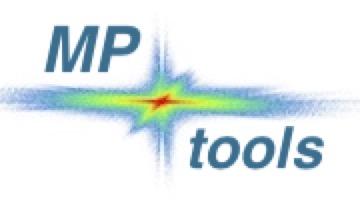The MP_DBIN tool converts molecular dynamics (MD) trajectory data files saved in the DL_POLY data format (ASCII, single- or multiple-snapshot) to the unique MP_tools binary form. Contrary to the LAMMPS and GENERAL data types (cf. MP_LBIN_DOC) here the data follow a strict model with a typical snapshot header
timestep 750125 552960 1 3 3.99999990E-04 270.04999
194.2110000000 0.0000000000 0.0000000000
0.0000000000 194.2110000000 0.0000000000
0.0000000000 0.0000000000 194.2110000000
containing:
timestep MD simulation type
750125 number of steps since start of simulation
552960 number of atoms (eg. 5 at/cell, no of cells 48^3 = 110592)
1 trajectory recording mode (1 = positions & velocities)
3 boundary conditions (3 = parallelepiped)
4.0E-04 MD simulation timestep [ps]
270.05 time tag of the dump [ps]
Consult the related log file in the EXAMPLES folder for a more detailed idea on how to run this tool.
In general the recommended input method is CELL. In cases where the one-to-one assignment of atoms to lattice positions in unit cells is impossible or unreliable the dump data can be read in the BULK mode. More details on the input methods are given on the Data handling page.
In DL_POLY there is no analogy to the TYPE key of LAMMPS, hence already when setting up the MD simulation it is advisable to assign specific names (eg. O1,O2 …) to atoms in special positions in the unit cell. In such a case one can set J_BASIS=1 so that MP_DBIN does not need to attempt the atom identification by position, as would be the case for J_BASIS=0.
NOTE:
In cases when the CELL input method attempts to identify atoms by their position it is absolutely essential to define correctly the sign of the basis vectors in the ATOMS section of the .PAR file. As DL_POLY dumps the simulation box by atom types, it may not be an easy task to check this by inspecting the huge ASCII snapshot file, which at its beginning contains thousands of lines related to the atom sitting at the origin of the unit cell. A quick help is the UNIX/LINUX tail command , which will display the last 10 lines (or any other specified number) of the trajectory file with atoms in a non trivial position.
